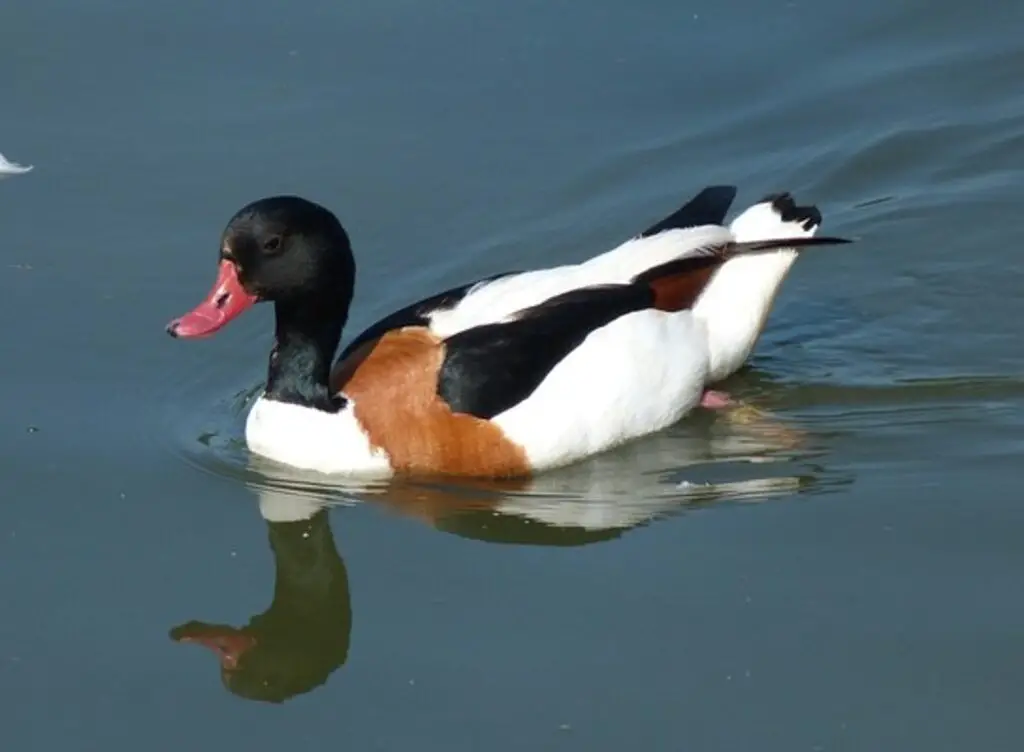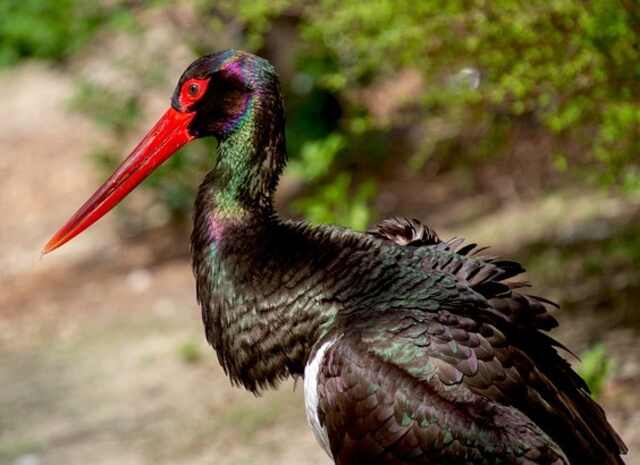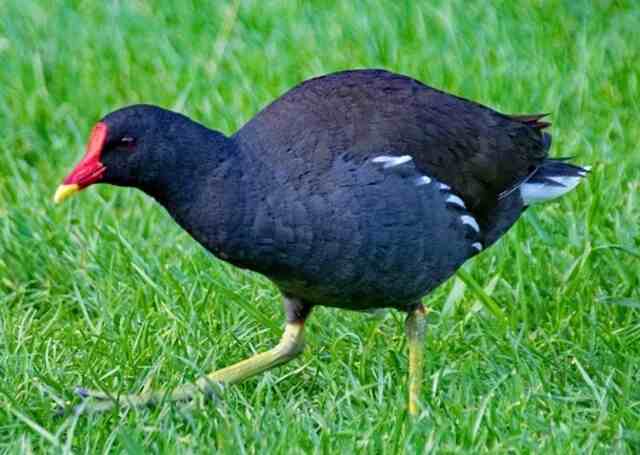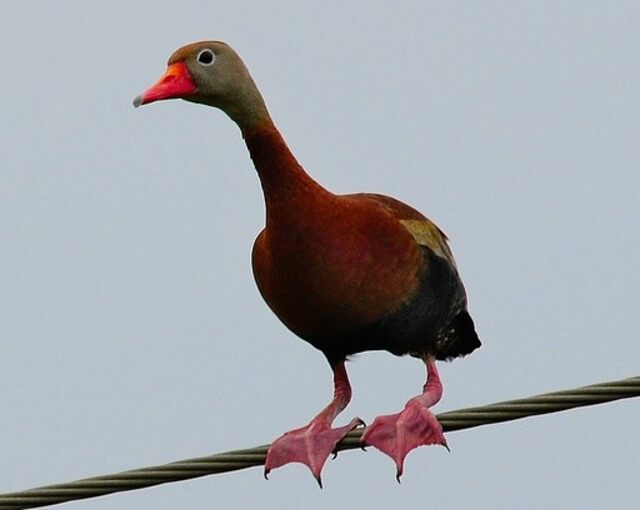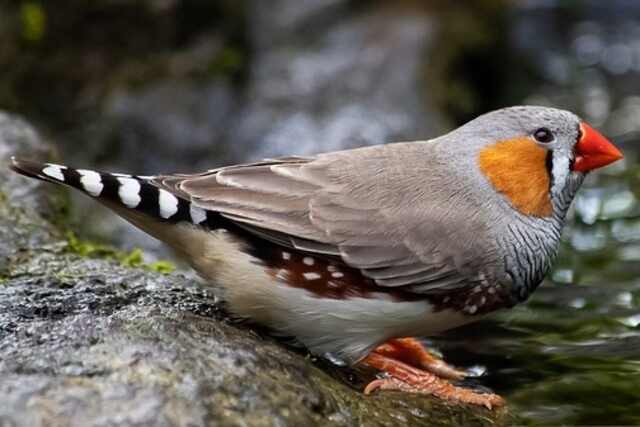When bird watching, spotting a bird with a red beak can be a fascinating and exciting experience. The color red is often associated with passion, love, and energy, making it a striking feature on any bird. These birds can be found in various parts of the world, from the lush forests of South America to the icy tundras of the Arctic.
In this blog, we will take a closer look at 18 different bird species that sport this vibrant and eye-catching color on their beaks. We’ll explore their unique characteristics, distribution, habitat, and diet, giving you a glimpse into the world of these captivating birds. So, join us as we dive into the intriguing world of birds with red beaks!
Table of Contents
- 1 What Makes Red Beaks Unique?
- 2 Why Birds Have Red Beaks?
- 3 Functions of Red Beaks
- 4 Types of Birds with Red Beaks
- 4.1 Northern Cardinal
- 4.2 Wood Duck
- 4.3 American Oystercatcher
- 4.4 Black Oystercatcher
- 4.5 Common Tern
- 4.6 Caspian Tern
- 4.7 Arctic Tern
- 4.8 Inca Tern
- 4.9 Common Gallinule
- 4.10 Black-bellied Whistling Duck
- 4.11 American White Ibis
- 4.12 Zebra Finch
- 4.13 Red-billed Firefinch
- 4.14 Red-billed Oxpecker
- 4.15 Black Stork
- 4.16 Black Skimmer
- 4.17 Laughing Gull
- 4.18 Purple Gallinule
- 5 Conclusion
- 6 Author
What Makes Red Beaks Unique?
Birds are known for their striking physical features, and a red beak is one of the most unique and eye-catching traits. The red coloration of a bird’s beak can vary in intensity, from a pale pink to a deep, vibrant red.
Unlike feathers, beaks are not shed and regrown, making them a permanent feature of the bird’s appearance. A red beak can be made even more striking when contrasted against a bird’s plumage.
Birds with red beaks can be found all around the world, and the coloration of their beaks can serve various functions, from communication to attracting mates.
Why Birds Have Red Beaks?
The red coloration of a bird’s beak is due to the presence of carotenoid pigments, which are obtained from the bird’s diet. These pigments are essential for the bird’s health and act as antioxidants, protecting the bird’s cells from damage.
The red coloration of a bird’s beak can also play a role in sexual selection, as brighter and more vibrant beaks are associated with higher levels of fitness and health. Additionally, red beaks can be used in courtship displays, where males display their bright beaks to attract mates.
Functions of Red Beaks
The functions of red beaks can be diverse and varied, with different bird species using this feature for different purposes. Here are a few common functions:
Camouflage
In some bird species, a red beak can provide camouflage in certain habitats. For example, birds that live in red-colored environments, such as deserts, may have red beaks that blend in with the surroundings, making it harder for predators to spot them.
Communication
Birds use their beaks to communicate with each other, and a red beak can be a crucial part of this communication. Some bird species use their beaks to signal aggression or submission, while others use them to communicate during mating rituals.
Attracting Mates
In many bird species, bright and vibrant red beaks are associated with higher levels of fitness and health, making them an attractive trait for potential mates. During courtship displays, males with bright red beaks may use them to attract females.
Thermoregulation
Birds with red beaks living in colder climates may use their beaks for thermoregulation, as the color red is known to absorb heat. The beak can act as a radiator, helping to keep the bird warm in cold temperatures.
Types of Birds with Red Beaks
Northern Cardinal

The Northern Cardinal is a songbird species native to North America. It is widely recognized for its striking red plumage and distinctive crest on its head. The male has a bright red body, while the female has a duller reddish-brown color. Cardinals have a varied diet that includes insects, seeds, fruits, and berries. They are commonly found in woodlands, gardens, and suburban areas throughout the eastern and central parts of North America.
The red beak of the Northern Cardinal is a key feature that sets it apart from other bird species. The beak is used for feeding, communication, and defense. It is believed that the bright red color of their beaks may be a result of their diet, which is high in pigments called carotenoids. The red coloration of the beak may also play a role in mate selection and territorial displays.
Read more: 50 Cardinal Bird Facts Every Birdwatcher Should Know!
Wood Duck
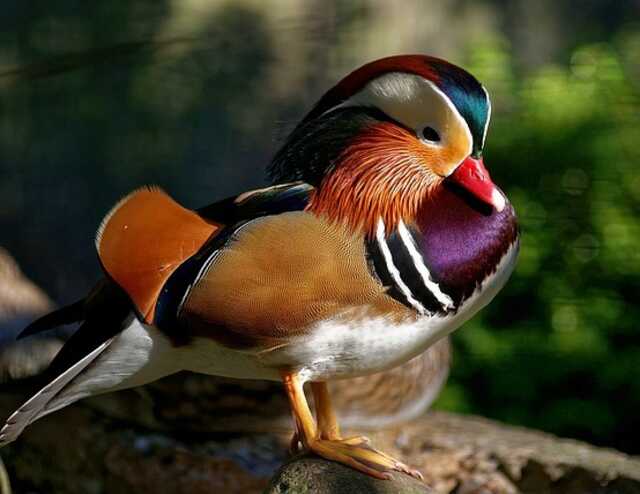
The Wood Duck, or Aix sponsa, is a colorful and distinctively marked bird that is found in North America. These ducks have a unique appearance, with the male featuring iridescent green, blue, and purple feathers, a bright red beak, and a white stripe around the eye, while the female has a gray-brown body and a white teardrop-shaped patch around the eye. Wood Ducks can be found in a variety of freshwater habitats, such as ponds, swamps, and wooded wetlands, throughout much of North America, including Canada, the United States, and Mexico.
They are omnivorous and primarily feed on seeds, fruits, and insects, but also eat aquatic plants, snails, and small fish. The bright red beaks of Wood Ducks serve as a visual display during courtship rituals and also play a role in identifying potential mates. Additionally, the red coloration may indicate the bird’s health and vitality. When feeding, the Wood Duck uses its beak to capture and manipulate food items.
American Oystercatcher

The American Oystercatcher (Haematopus palliatus) is a large shorebird with distinct black and white plumage and a long, bright red beak. These birds can be found along the Atlantic and Gulf coasts of the United States, as well as in Central and South America. They inhabit coastal habitats, including sandy beaches, rocky shores, and mudflats, and feed primarily on bivalves such as clams and oysters, as well as other invertebrates like crabs and worms.
The red color of their beaks is due to the presence of a pigment called astaxanthin, which is derived from their diet of shellfish. Oystercatchers use their beaks to pry open the shells of their prey and to probe in the sand for hidden prey. The color of their beaks also serves as a signal of their health and reproductive fitness to potential mates.
Black Oystercatcher
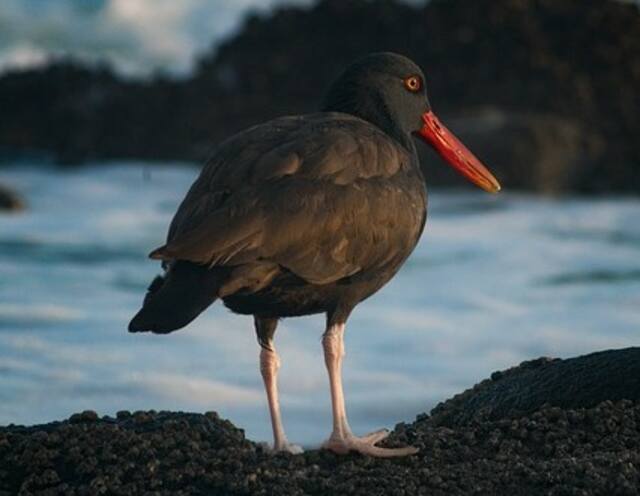
The Black Oystercatcher is a distinctive bird with entirely black plumage, orange-red eyes, and a long, pointed red beak. It is found along the Pacific coast of North America, from Alaska to Baja California, and prefers rocky shorelines and intertidal areas as its habitat. They are non-migratory and usually form lifelong bonds with their mates. Their diet primarily consists of mollusks, especially oysters, which they break open with their powerful beaks.
The red color of their beaks is due to the high levels of iron oxide pigment in their diet. They use their beaks not only for foraging but also for courtship displays, territorial defense, and nest building. Additionally, the bright red coloration of their beaks may serve as a signal of their health and fitness to potential mates.
Common Tern
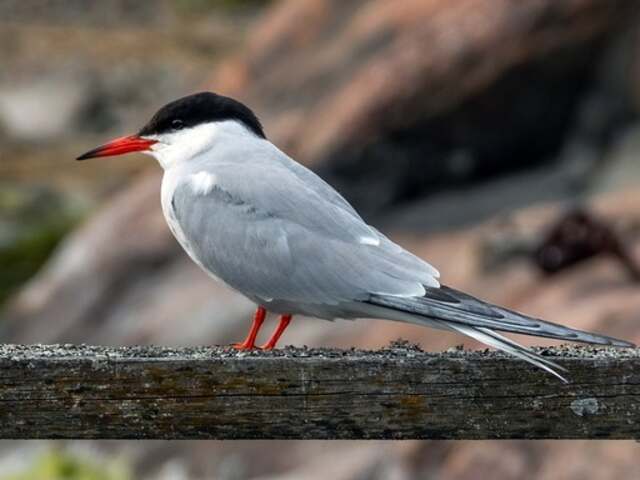
The Common Tern (Sterna hirundo) is a seabird species that is distributed widely throughout the world. They are medium-sized birds, with a body length of about 33-40 cm and a wingspan of around 70-80 cm. Common Terns are known for their distinctive black cap, white underparts, and long, pointed wings. They inhabit a variety of coastal habitats, including sandy beaches, rocky shores, and estuaries. Their diet mainly consists of fish, but they also consume crustaceans and insects.
Common Terns have bright red beaks that they use to catch and grip their prey, as well as to communicate with other birds during courtship and territorial displays. The red color of their beaks is caused by a pigment called carotenoids, which is also found in many fruits and vegetables. This pigment helps to protect the birds’ beaks from the damaging effects of sunlight and helps them to find mates with the strongest and healthiest beaks.
Caspian Tern
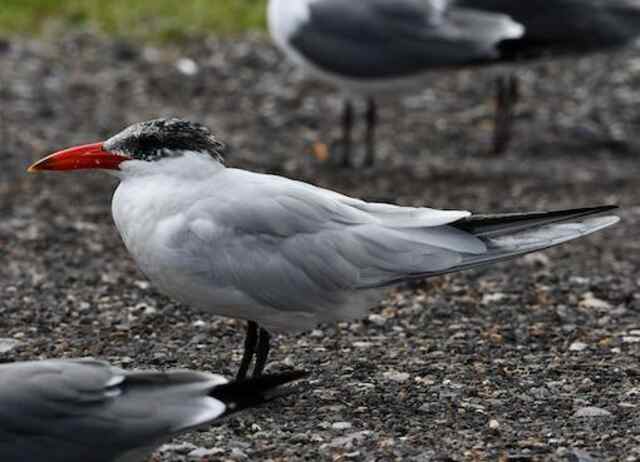
The Caspian Tern (Hydroprogne caspia) is a large and elegant bird with a striking appearance. It has a distinctive black crest on its head, a white body, and a bright red beak that sets it apart from other terns. These birds are found in coastal areas and inland waterways across much of the world, including North and South America, Europe, Asia, Africa, and Australia. They prefer habitats near shallow waters, such as estuaries, lakes, and rivers, where they can dive for fish, their primary diet.
The Caspian Tern uses its sharp and robust beak to catch and swallow its prey, and it serves as a useful tool for defense and courtship displays. The bright red coloration of the beak is due to carotenoid pigments derived from their diet, and it signals their fitness and health to potential mates.
Arctic Tern
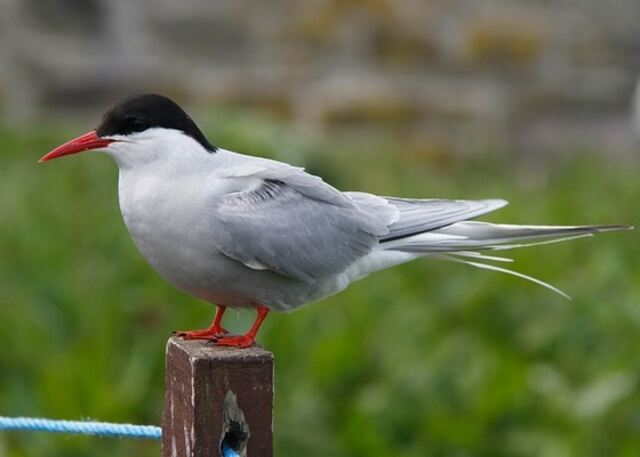
The Arctic Tern (Sterna paradisaea) is a bird that is famous for its long annual migration, which is the longest known migration of any bird species. They breed in the Arctic and sub-Arctic regions and migrate to the Antarctic and back each year, traveling up to 70,000 km. The Arctic Tern is a medium-sized bird with a wingspan of around 80 cm. They have a white body, a gray back, and distinctive red beaks and feet.
They are typically found near the coasts and open ocean, where they feed on small fish, crustaceans, and insects. The red coloration of their beaks is due to the presence of carotenoid pigments in their diet, which they obtain from their prey. The red coloration of their beaks may serve as a signal of their health and breeding fitness, helping to attract potential mates. They also use their beaks to catch and manipulate prey and to defend their territory.
Inca Tern

The Inca Tern, also known as the Peruvian Tern, is a seabird species found along the west coast of South America, from Peru to Chile. This bird is recognized by its striking black and white plumage, a unique feathered crest, and a bright red beak and feet. They prefer to inhabit rocky shorelines and islands and feed mainly on small fish, squid, and crustaceans.
The distinctive red beak serves several functions, including attracting a mate, establishing territory, and showing off their health and genetic quality. Inca Terns also use their beaks to catch their prey and carry it back to their nesting sites. This species is considered Near Threatened due to habitat loss, hunting, and the impact of climate change on their prey availability.
Common Gallinule
A member of the family Rallidae, the Common Gallinule is a bird species commonly referred to as the Common Moorhen. They are characterized by their dark plumage, white undertail, and distinctive red beak with a yellow tip. These birds are widely distributed across the Americas, Europe, Africa, and Asia, and can be found in a variety of wetland habitats such as marshes, swamps, and ponds. Their diet consists of a variety of plants, insects, and small aquatic animals.
The red beak of the Common Gallinule is used for both feeding and communication purposes. The bright coloration of the beak may serve as a signal of dominance or aggression towards other birds during mating or territorial disputes. Additionally, the red coloration may also attract potential mates. The beak is also used to grasp and manipulate food items while foraging in the water.
Black-bellied Whistling Duck
The Black-bellied Whistling Duck is a distinctive waterfowl species found in the southern United States, Central, and South America. They are named after their characteristic whistling calls, which can be heard throughout their range. These ducks are primarily found in wetland habitats such as swamps, marshes, and ponds, where they feed on a variety of plant matter and aquatic invertebrates.
Interestingly, they have a bright red beak, which is thought to be an adaptation to their feeding behavior. The beak is used to sift through mud and vegetation in search of food, and the red coloration may help them to locate prey in murky water. Additionally, the red coloration may play a role in mate selection or species recognition. Overall, the Black-bellied Whistling Duck is an intriguing and unique waterfowl species with a variety of interesting adaptations.
American White Ibis
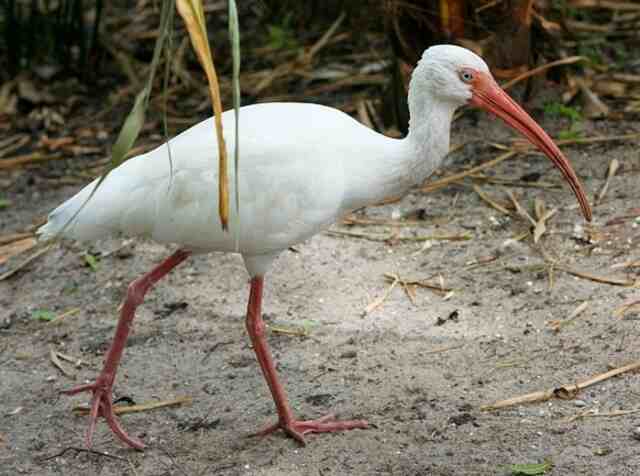
The American White Ibis is a beautiful wading bird that is commonly found throughout the southeastern United States, as well as in parts of Central and South America. It has a distinctive long, curved beak that is bright red in color. The bird’s overall coloration is white with black wingtips, and it has long legs that are also red. The American White Ibis prefers wetland habitats, such as marshes, swamps, and estuaries, where it feeds on a variety of prey including fish, crustaceans, and insects.
The red coloration of the ibis’ beak is due to a high concentration of hemoglobin, which helps protect the bird’s sensitive tissues from the sun’s harmful ultraviolet rays. Additionally, the beak serves as a visual signal to other ibises during courtship displays and can also be used to probe the mud and water for prey.
Zebra Finch
The Zebra Finch, a small bird native to Australia, is known for its striking black and white striped feathers and distinct red beak. These birds are highly social and often seen in flocks of up to 100 individuals. They are distributed throughout most of Australia, with a range spanning from the tropical north to the temperate south. They typically inhabit open grasslands, shrublands, and savannas. Their diet consists of a variety of seeds, insects, and fruit.
The red beak of the Zebra Finch is a result of the carotenoid pigments in their diet. This bright coloration plays an important role in mate selection and communication. During courtship, male Zebra Finches use their red beaks to display their fitness and attract potential mates. Additionally, the red beak serves as an indicator of overall health and vitality, making it a valuable trait in mate selection.
Red-billed Firefinch
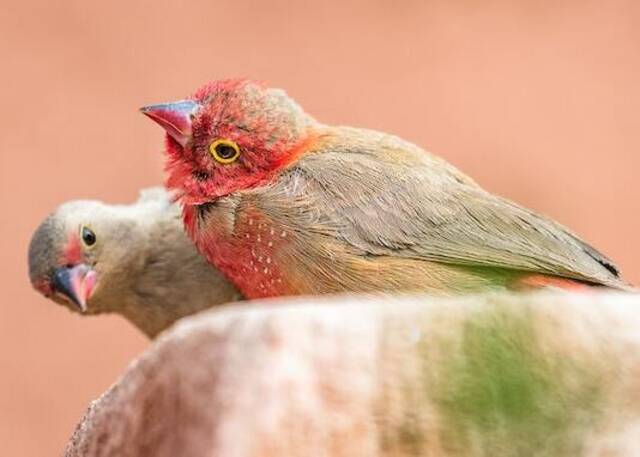
The Red-billed Firefinch, also known as Lagonosticta senegala, is a small, brightly colored bird found in sub-Saharan Africa. This species is typically 10cm long, with a distinctive red beak that is used to crack open seeds and other small food items. They have a preference for dry savannas, grasslands, and scrublands, and are often found in small flocks.
In terms of diet, these birds primarily feed on seeds, but also consume insects and small fruits. The red coloration of their beaks is thought to serve as a visual signal for potential mates, as well as a sign of their health and overall fitness. The bright red coloration may also act as a warning to predators, as it is often associated with toxicity or danger in the animal kingdom.
Red-billed Oxpecker
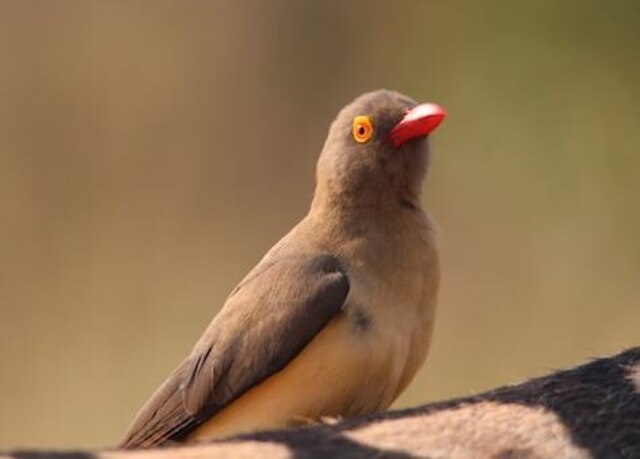
The Red-billed Oxpecker, scientifically known as Buphagus erythrorhynchus, is a bird species that is commonly found in savannah grasslands and woodlands across sub-Saharan Africa. These birds have a unique symbiotic relationship with large mammals such as rhinos, buffaloes, and giraffes, in which they feed on ticks, fleas, and other parasites that infest their host’s skin. The Red-billed Oxpecker’s beak is long, sharp, and red, which helps them to efficiently pick and remove parasites from their host’s skin without harming them.
Additionally, their beaks are slightly curved downwards, which allows them to use their strong bills to pry open the hides of their host’s wounds to feed on the blood and pus. This bird’s beak serves as a vital tool that enables them to survive and maintain their symbiotic relationship with their mammalian hosts.
Black Stork
The Black Stork, also known as Ciconia nigra, is a large wading bird that inhabits parts of Europe, Asia, and Africa. They are generally found near freshwater sources such as rivers, lakes, and wetlands. They have a distinct appearance, with their black plumage, white belly, and long, red beak. The beak is used primarily for catching prey, such as fish, amphibians, and small mammals.
The red color of the beak is due to the presence of carotenoid pigments, which are obtained through their diet. The red coloration is thought to play a role in attracting potential mates, as well as signaling dominance to other birds during aggressive encounters. Overall, the Black Stork is an interesting and important species, and its striking appearance and unique adaptations make it a fascinating bird to study.
Black Skimmer
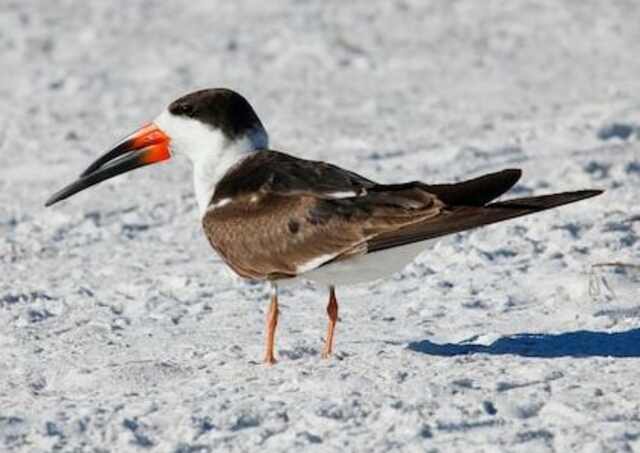
The Black Skimmer is a unique bird species found in the Americas. These birds are easily recognizable by their striking red and black beaks. They have a wide distribution range, from the southern United States down to Argentina. Black Skimmers are typically found in coastal areas, particularly beaches, lagoons, and estuaries. They feed on small fish and invertebrates by skimming the surface of the water with their lower mandible.
Their lower mandible is longer than their upper mandible, which allows them to effectively capture prey without getting their feathers wet. The red coloration of their beaks is thought to be an adaptation for visual communication, allowing individuals to more easily recognize each other during social interactions. Overall, Black Skimmers are fascinating birds that have evolved unique characteristics to thrive in their coastal habitat.
Laughing Gull
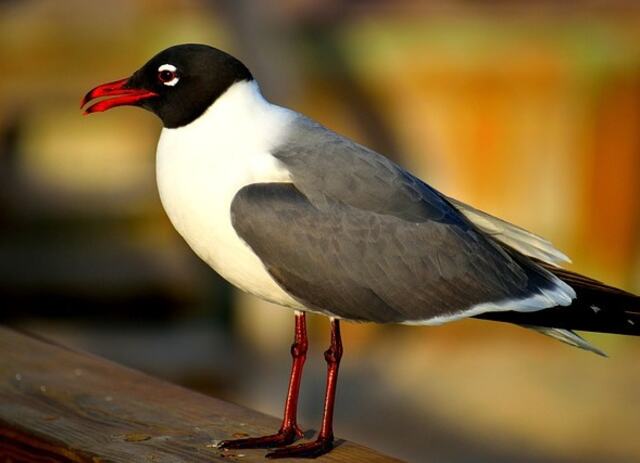
The Laughing Gull (Leucophaeus atricilla) is a medium-sized seabird that is found along the Atlantic and Gulf coasts of North and South America. These gulls are easily identified by their striking appearance, with a black head, white eye-arcs, gray wings, and a distinctive red bill. They breed in large colonies on sandy or marshy islands and coastal areas. Laughing Gulls are versatile eaters and have an opportunistic feeding behavior, consuming a diverse range of prey such as fish, crustaceans, insects, and even garbage.
Their red beaks serve several functions, including attracting mates during breeding season, signaling aggression or submission, and catching and manipulating prey. The bright red color of their beaks is also thought to be an indication of their overall health and fitness, as it is a signal of a bird’s ability to acquire pigments from its diet.
Purple Gallinule
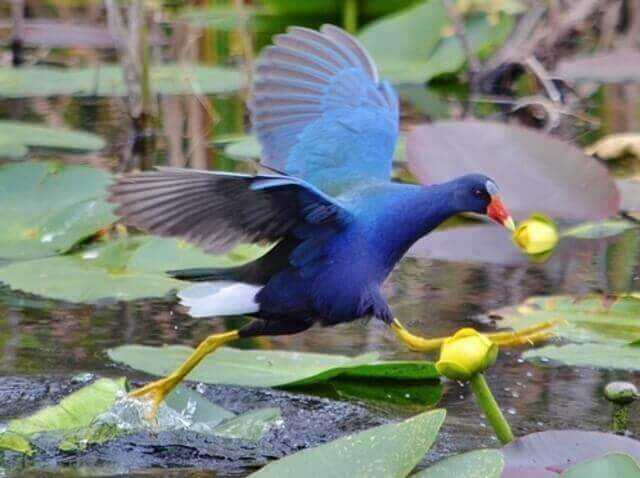
The Purple Gallinule is a striking bird with vivid plumage and a unique appearance. This bird is found throughout much of the Americas, from the southeastern United States to northern Argentina. They prefer to live in wetlands such as marshes, swamps, and ponds, and are known for their strong swimming and walking abilities. The Purple Gallinule has an omnivorous diet, feeding on both plant material and small animals such as insects, snails, and small fish.
One of the most striking features of the Purple Gallinule is its bright red beak, which is used for a variety of functions such as foraging, communication, and territorial display. The red coloration of the beak is due to the presence of carotenoid pigments that are obtained from their diet. The red coloration serves as a signal of good health and breeding potential to potential mates, and also helps to deter potential predators.
Conclusion
In conclusion, birds with red beaks are some of the most stunning and fascinating creatures in the avian world. Their beaks serve a variety of functions, from feeding and preening to attracting mates and deterring predators. The 18 birds listed in this blog are just a small sample of the diverse array of bird species that possess red beaks.
Whether you’re a seasoned birdwatcher or a casual observer, taking the time to appreciate the beauty and complexity of these birds can be a rewarding experience. So next time you spot a bird with a red beak, take a moment to admire its striking coloration and consider the important role that its beak plays in its survival and reproduction.
- 21 Birds with Big Beaks: See Nature’s Swiss Army Knife!
- 16 Birds with Colorful Beaks: See Nature’s Paintbrush!
- 11 Black Birds with Yellow Beaks in 2023 (Complete Guide)
Related Posts:

